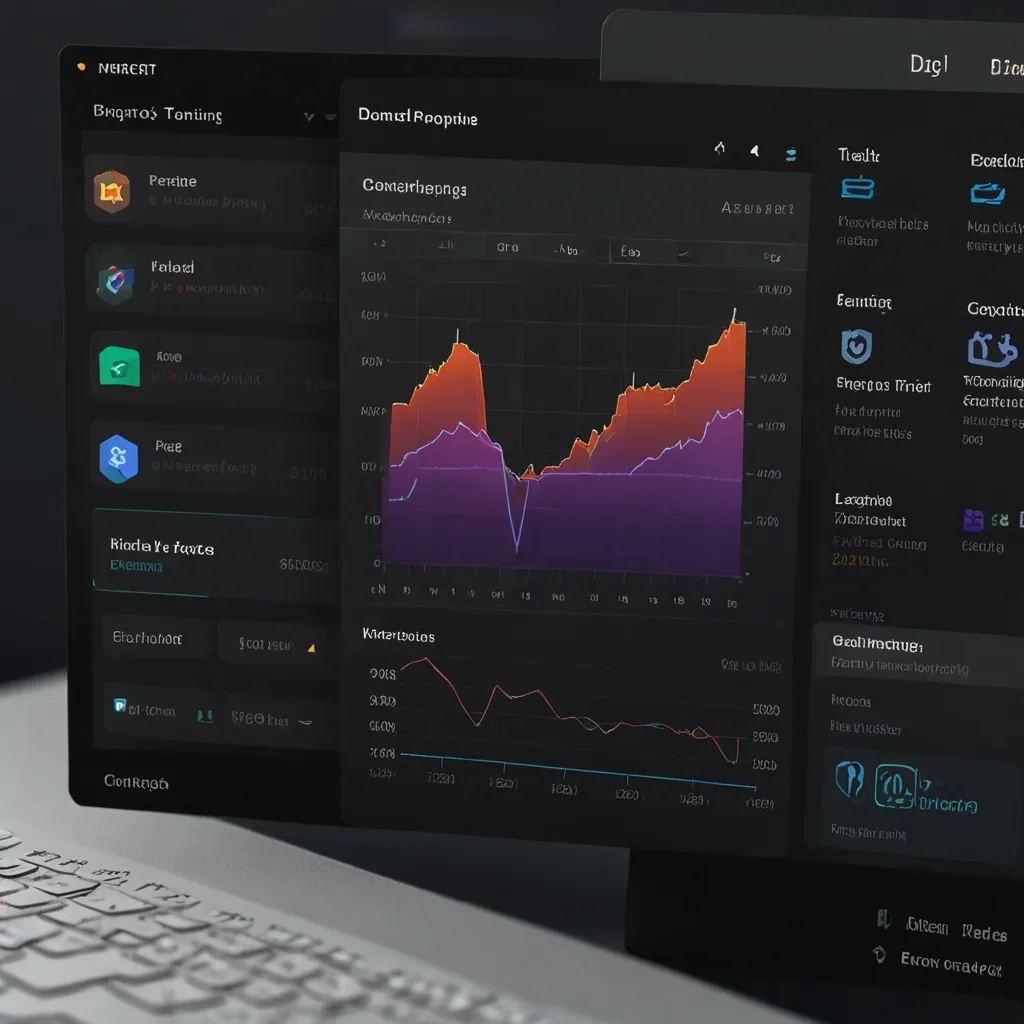Snapshot testing has become a game-changer in the world of software development, especially when it comes to dealing with large components. It’s a technique that’s gained a lot of traction in recent years, and for good reason. As someone who’s spent countless hours debugging and testing code, I can tell you that snapshot testing has saved my bacon more times than I can count.
So, what exactly is snapshot testing? In a nutshell, it’s a way to automatically capture the output of your components and compare it to a previously saved “snapshot” to detect any unexpected changes. It’s like taking a photo of your code’s behavior and using it as a reference point for future tests.
When it comes to large components, snapshot testing can be a real lifesaver. These behemoths can be a nightmare to test manually, with countless edge cases and potential bugs lurking in the shadows. That’s where snapshot testing comes in, providing a safety net that catches even the smallest changes.
But here’s the thing: snapshot testing isn’t a silver bullet. Like any tool in your development arsenal, it needs to be used correctly to be effective. I’ve seen plenty of developers fall into the trap of relying too heavily on snapshots without really understanding how to use them properly.
One of the most common mistakes I see is treating snapshot tests as a replacement for other types of testing. Don’t get me wrong, snapshots are great, but they should be part of a comprehensive testing strategy that includes unit tests, integration tests, and end-to-end tests.
Another pitfall to avoid is creating overly large snapshots. When you’re dealing with big components, it can be tempting to just snapshot the entire thing and call it a day. But trust me, that’s a recipe for disaster. Large snapshots are hard to maintain and can lead to a lot of false positives when things change.
Instead, focus on creating smaller, more targeted snapshots. Break down your large components into smaller, more manageable pieces and snapshot those individually. This approach not only makes your tests more maintainable but also helps you pinpoint exactly where changes are occurring.
Let’s look at an example. Say you’re working on a complex dashboard component in React. Instead of snapshotting the entire dashboard, you might create separate snapshots for each widget or section. Here’s what that might look like:
import React from 'react';
import { render } from '@testing-library/react';
import Dashboard from './Dashboard';
describe('Dashboard', () => {
it('renders the header correctly', () => {
const { getByTestId } = render(<Dashboard />);
const header = getByTestId('dashboard-header');
expect(header).toMatchSnapshot();
});
it('renders the user info widget correctly', () => {
const { getByTestId } = render(<Dashboard />);
const userInfo = getByTestId('user-info-widget');
expect(userInfo).toMatchSnapshot();
});
// More targeted snapshot tests for other widgets...
});
This approach gives you much more granular control over your snapshots and makes it easier to update them when necessary.
Speaking of updating snapshots, that’s another area where I see a lot of developers stumble. It’s crucial to review snapshot updates carefully before committing them. I can’t tell you how many times I’ve seen bugs slip through because someone blindly updated a snapshot without really looking at what changed.
One strategy I’ve found helpful is to use interactive snapshot updating. Most testing frameworks offer a way to update snapshots interactively, allowing you to review each change and decide whether to accept it or not. This can be a real time-saver when you’re dealing with a lot of snapshots.
Another advanced strategy for snapshot testing large components is to use parameterized snapshots. This technique allows you to create multiple snapshots for a single component based on different props or states. It’s especially useful for components that have a lot of conditional rendering.
Here’s an example of how you might implement parameterized snapshots in Jest:
import React from 'react';
import { render } from '@testing-library/react';
import UserProfile from './UserProfile';
describe('UserProfile', () => {
const cases = [
{ name: 'with all info', props: { name: 'John Doe', age: 30, location: 'New York' } },
{ name: 'without age', props: { name: 'Jane Smith', location: 'London' } },
{ name: 'without location', props: { name: 'Bob Johnson', age: 25 } },
];
test.each(cases)('renders correctly $name', ({ props }) => {
const { container } = render(<UserProfile {...props} />);
expect(container).toMatchSnapshot();
});
});
This approach allows you to test multiple scenarios with a single test case, making your tests more comprehensive and easier to maintain.
Now, let’s talk about performance. When you’re dealing with large components, snapshot tests can start to slow down your test suite. One way to address this is by using shallow rendering. This technique renders only the component being tested, without rendering its child components.
Here’s an example using Enzyme’s shallow rendering:
import React from 'react';
import { shallow } from 'enzyme';
import ComplexComponent from './ComplexComponent';
describe('ComplexComponent', () => {
it('renders correctly', () => {
const wrapper = shallow(<ComplexComponent />);
expect(wrapper).toMatchSnapshot();
});
});
Shallow rendering can significantly speed up your tests, especially when dealing with deeply nested components.
Another performance optimization technique is to use snapshot serializers. These allow you to customize how your components are serialized into snapshots, which can help reduce the size of your snapshots and make them easier to read and maintain.
For example, you might want to ignore certain props that change frequently but aren’t relevant to your tests. Here’s how you could implement a custom serializer in Jest:
expect.addSnapshotSerializer({
test: (val) => val && val.props && val.props.className,
print: (val, serialize) => {
const { className, ...otherProps } = val.props;
return serialize({ ...val, props: otherProps });
},
});
This serializer would remove the className prop from all components in your snapshots, which can be useful if you’re using dynamic class names that change frequently.
One thing I’ve learned through experience is the importance of keeping your snapshots in sync with your code. It’s easy for snapshots to become outdated, especially in large projects with multiple developers. To combat this, I recommend running your snapshot tests as part of your continuous integration (CI) pipeline.
This ensures that any changes that affect your snapshots are caught early, before they make it into production. It also encourages developers to update snapshots as part of their regular workflow, rather than letting them pile up and become overwhelming.
When it comes to organizing your snapshot tests, I’m a big fan of the “snapshot per file” approach. Instead of having one giant snapshot file for your entire application, create separate snapshot files for each component or module. This makes it much easier to manage and update your snapshots, especially when working in a team.
Let’s not forget about error handling in our snapshot tests. It’s important to test not just the happy path, but also how your components behave when things go wrong. You can use snapshot testing to capture error states and ensure they’re rendered correctly.
Here’s an example of how you might test an error state:
import React from 'react';
import { render } from '@testing-library/react';
import ErrorBoundary from './ErrorBoundary';
describe('ErrorBoundary', () => {
it('renders error message correctly', () => {
const ThrowError = () => {
throw new Error('Test error');
};
const { container } = render(
<ErrorBoundary>
<ThrowError />
</ErrorBoundary>
);
expect(container).toMatchSnapshot();
});
});
This test captures how your error boundary component renders when an error is thrown, ensuring that your error handling logic is working as expected.
As we wrap up this deep dive into snapshot testing for large components, I want to emphasize the importance of balance. Snapshot testing is a powerful tool, but it shouldn’t be your only tool. Use it in conjunction with other testing methods, and always strive to write meaningful, maintainable tests.
Remember, the goal of testing isn’t just to increase code coverage or catch bugs (although those are important). It’s about giving you confidence in your code. When used correctly, snapshot testing can provide that confidence, allowing you to refactor and improve your large components without fear of breaking things.
So go forth and snapshot test with confidence! And don’t forget to update those snapshots regularly. Your future self (and your team) will thank you.






